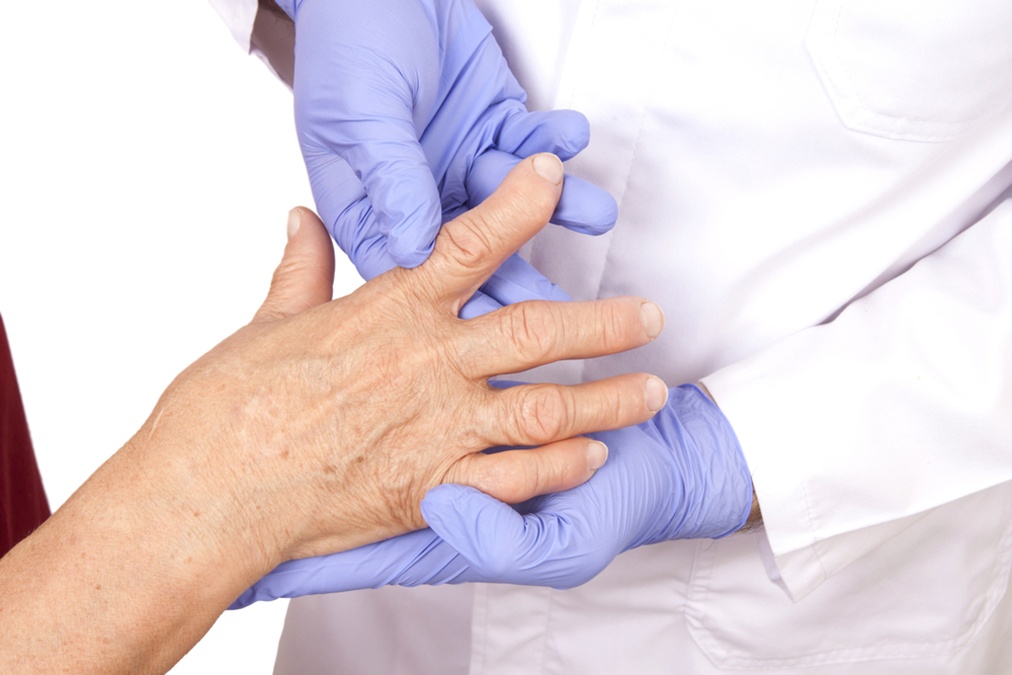 It costs a lot of money and hassle to go for an MRI to monitor the onset and progress of arthritis.
It costs a lot of money and hassle to go for an MRI to monitor the onset and progress of arthritis.
So, a new study published the journal Arthritis & Rheumatology comes as a heaven sent for anyone concerned about this disease.
You can perform this test right now, right where you’re sitting.
Slide your fingertips across the full length of the fingers on your opposing hand. Do you feel any bony enlargements of your finger joints that were not there when you’re younger.
Medical scientists call them Heberden’s nodes and they are very typical hallmarks of osteoarthritis.
Since they indicate osteoarthritis of the finger joints and as they are so easily visible, researchers wondered whether they could be used to indicate the presence of osteoarthritis in other joints too.
To find out, a team of scientists recruited 575 participants from the Foundation for the National Institute of Health project.
They subjected their participants to a detailed examination of the finger joints to check for Heberden’s nodes. At the same time, they performed an MRI scan on the subject’s knees.
395 of their subjects had Heberden’s nodes and 188 did not.
People with Heberden’s nodes were more likely to have knee arthritis than those without them.
24 months later, they repeated the knee MRI scan to check whether their knee arthritis had progressed structurally.
Accordingly, those with Heberden’s nodes experienced more thickening of the bones surrounding their knee joints indicated that their arthritis was progressing.
This means that you and your doctors can use your fingers to predict knee arthritis and probably other types of arthritis.
This is not only a cheaper and more convenient method than MRIs but can also help to indicate that you must start taking action to cope with arthritis even before you start experiencing any pain.

 Overcoming IBD
Overcoming IBD Multiple Sclerosis
Multiple Sclerosis Banishing Bronchitis
Banishing Bronchitis Gum Disease Gone
Gum Disease Gone Overcoming Onychomycosis
Overcoming Onychomycosis Neuropathy No More
Neuropathy No More The Prostate Protocol
The Prostate Protocol Brain Booster
Brain Booster
 Ironbound
Ironbound
 Solution for Shingles
Solution for Shingles
 The Bone Density Solution
The Bone Density Solution
 The Ultimate Healing Protocol
The Ultimate Healing Protocol
 The Parkinson's Protocol
The Parkinson's Protocol
 The Chronic Kidney Disease Solution
The Chronic Kidney Disease Solution
 Overthrowing Anxiety
Overthrowing Anxiety The Fatty Liver Solution
The Fatty Liver Solution The Hypothyroidism Solution
The Hypothyroidism Solution
 The End of Gout
The End of Gout The Blood Pressure Program
The Blood Pressure Program
 The Oxigized Cholesterol Strategy
The Oxigized Cholesterol Strategy
 Stop Snoring And Sleep Apnea Program
Stop Snoring And Sleep Apnea Program
 The Arthritis Strategy
The Arthritis Strategy The Vertigo & Dizziness Program
The Vertigo & Dizziness Program The 3-Step Diabetes Strategy
The 3-Step Diabetes Strategy Hemorrhoids Healing Protocol
Hemorrhoids Healing Protocol The Erectile Dysfunction Master
The Erectile Dysfunction Master Weight Loss Breeze
Weight Loss Breeze The IBS Program
The IBS Program The Insomnia Program
The Insomnia Program The Migraine and Headache Program
The Migraine and Headache Program The Neck Pain Solution
The Neck Pain Solution The Menopause Solution
The Menopause Solution The Ejaculation Master
The Ejaculation Master The TMJ Solution
The TMJ Solution The Acid Reflux Solution
The Acid Reflux Solution The Fibromyalgia Solution
The Fibromyalgia Solution The Psoriasis Strategy
The Psoriasis Strategy